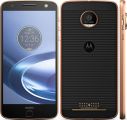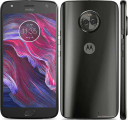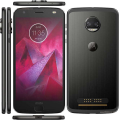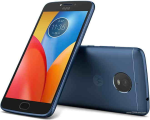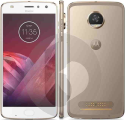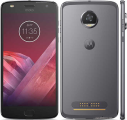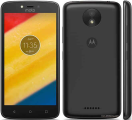Motorola Moto Z Force Prices
Important Note.
- All prices are in Pakistani Rupee (PKR)
- Prices may vary at stores and our effort will be to provide you with the updated prices.
- The latest price of Motorola Moto Z Force was obtained on 17 مئی, 2019. The prices at the original stores had been updated on the respective mentioned dates.
- Find out WhatMobile price has dropped in Pakistan by selecting Notify Price Drop button
- Find out WhatMobile has better specifications by clicking Add To Compare Button find out what Mobile has better reviews by visiting our reviews section
- Find out WhatMobile is cheaper on which retailer by clicking Compare prices from retailers button
Search Terms
- Motorola Moto Z Force
Specifications
| GENERAL | |
| 2G Network | GSM 850 / 900 / 1800 / 1900 - EMEA, USA CDMA 800 / 1900 - USA |
|---|---|
| 3G Network | HSDPA 850 / 900 / 1900 / 2100 - EMEA, USA CDMA2000 1xEV-DO - USA |
| 4G Network | LTE band 2(1900), 3(1800), 4(1700/2100), 5(850), 7(2600), 13(700) - USA |
| Sim | Nano-SIM |
| Announced | 13/06/2016 |
| Status | Available. Released 2016, September |
| BODY | |
| Dimensions | 155.9 x 75.8 x 7 mm (6.14 x 2.98 x 0.28 in) |
| Weight | 163 g (5.75 oz) |
| DISPLAY | |
| Display Size | 5.5 inches, 83.1 cm2 (~70.3% screen-to-body ratio) |
| Resolution | 1440 x 2560 pixels, 16:9 ratio (~535 ppi density) |
| MultiTouch | Yes |
| Protection | Shatterproof |
| SOUND | |
| AlertTypes | Vibration; MP3, WAV ringtones |
| LoudSpeaker | Yes |
| 3.5mm jack | No - 3.5 mm to USB-C headphone adapter incl. - Active noise cancellation with dedicated mic |
| MEMORY | |
| CardSlot | microSD, up to 256 GB (dedicated slot) |
| Internal | 32 GB, 4 GB RAM |
| DATA | |
| GPRS | Yes |
| EDGE | Yes |
| Speed | HSPA 42.2/5.76 Mbps, LTE-A (3CA) Cat9 450/50 Mbps |
| WLAN | Wi-Fi 802.11 a/b/g/n/ac, dual-band, WiFi Direct, hotspot |
| Blue Tooth | 4.1, A2DP, EDR, LE, aptX |
| NFC | Yes |
| USB | Type-C 1.0 reversible connector, USB On-The-Go; magnetic connector |
| CAMERA | |
| Camera Primary | 21 MP (f/1.8, 1.12 µm), phase detection & laser autofocus, OIS, dual-LED dual-tone flash |
| Camera Features | Geo-tagging, touch focus, face detection, panorama, HDR |
| CameraVideo | 2160p@30fps, 1080p@60fps, 1080p@30fps, HDR |
| CameraSecondary | 5 MP (f/2.2, 1.4 µm), LED flash, 1080p |
| FEATURES | |
| Processor Cores | Quad-Core |
| OS | Android 6.0.1 (Marshmallow), 7.1.1 (Nougat), planned upgrade to Android 8.0 (Oreo) |
| CPU | Quad-core (2x2.15 GHz Kryo & 2x1.6 GHz Kryo) |
| Sensors | Fingerprint (front-mounted), accelerometer, gyro, proximity, compass |
| Messaging | SMS(threaded view), MMS, Email, Push Email, IM |
| Browser | HTML5 |
| Radio | No |
| GPS | Yes, with A-GPS, GLONASS |
| Java | No |
| Colors | Black/Gray, Black/Rose Gold, Black/Gold, White |
| Others | - Fast battery charging - MP3/AAC+/WAV/Flac player - MP4/H.264 player - Photo/video editor - Document viewer |
| BATTERY | |
| Battery | Non-removable Li-Ion 3500 mAh battery |
| MISC | |
Reviews

We're still not used to referring to Moto devices as Lenovo Moto instead of Motorola Moto, although we're pretty sure both firms would rather it was simply "Moto Z" or "Moto Z Force" instead of tacking the OEM name on the front and turning it into a tongue-twister. Still, whoever you attribute them to, the duo was announced in June 2016 at a Lenovo event following many months of rumours, leaks, and speculation. The pair are both premium-grade handsets taking over from the Moto X line-up, which last year brought us the Moto X Style and Moto X Play. Just as with the previous generation, the new Moto Z family share a broadly similar feature set and design ethos, but there are a few precise tweaks in places to make these two distinct devices. Let's take a look shall we?
Moto Z vs Moto Z Force: Specs
Moto Z
Dimensions: 153.3 x 75.3 x 5.2 mm, 136g
Display: 5.5in AMOLED 1440 x 2560 pixels (~535 ppi pixel density)
OS: Android Marshmallow (Stock)
Chipset: Qualcomm MSM8996 Snapdragon 820
Memory: 4GB
Storage Options: 32GB/64GB
SD-Support: Up to 256GB
Primary Camera: 13 MP, f/1.8, OIS, laser autofocus, dual-LED flash
Secondary Camera: 5MP, f/2.2, LED flash
Battery: Non-removable Li-Po 2,600 mAh battery
Moto Z Force
Dimensions: 155.9 x 75.8 x 7 mm, 163g
Display: 5.5in AMOLED 1440 x 2560 pixels (~535 ppi pixel density)
OS: Android Marshmallow (Stock)
Chipset: Qualcomm MSM8996 Snapdragon 820
Memory: 4GB
Storage Options: 32GB/64GB
SD-Support: Up to 256GB
Primary Camera: 21MP, f/1.8, laser & phase detection autofocus, OIS, 1.12 µm pixel size
Secondary Camera: 5MP, f/2.2, LED flash
Battery: Non-removable Li-Po 3,500 mAh battery
Moto Z vs Moto Z Force: Design & Display
On the whole both the Moto Z and Moto Z Force carry the same design language; they have the same slightly rounded-off shape with a somewhat Nexus-like appearance, the same end-capped and patterned back panel aesthetic, and are both made from the same "aircraft-grade" aluminum and stainless steel with Gorilla Glass 4 on front and back. There's a VERY good reason for these similarities quite apart from simple brand cohesion, and that reason is MotoMods. We'll go into more detail on MotoMods later, but to summarise these are clip-on accessory panels which attach via magnets to the phone's back. The most basic are simply aesthetic accessories allowing you to personalise your phone from a range of colours and finishes, but the 16 little dots on the rear of both handset models do serve a purpose, and that's so that the functional MotoMods can do magical things like boost your battery life, incorporate a projector, or give you a set of stereo speakers. Naturally, for the MotoMods to be compatible with both devices they had to follow more or less the same design and proportions - the only real difference on the outside is in device thickness; the Moto Z is easily the thinnest smartphone on the market right now at a mere 5.2mm, while the Moto Z Force comes in at a more standard 7mm round the waist. The reason for the added girth? Twofold; one for a bigger battery cell, and two for an additional layer of screen protection with ShatterShield tech on top of the Gorilla Glass 4.
Both handsets also feature identical display panels; a 5.5in AMOLED with a QHD resolution at 535 pixels-per-inch (ppi) for sharp visual quality, as well as good colour and contrast.
Moto Z vs Moto Z Force: Hardware
Like the exterior, most of the interior specs are identical between these two handsets. They both pack Qualcomm's latest and greatest Snapdragon 820 processor with 4GB of RAM, come in 32GB and 64GB storage flavours, offer microSD support, and utilise the new Type-C USB port. The key difference is in the battery department, where the regular Moto Z has a 2,600mAh cell the Moto Z Force has a significantly larger 3,500mAh setup which should offer you much more use-time on a charge. Both battery setups are non-removable though.
Moto Z vs Moto Z Force: Camera
Another major differentiator, the Moto Z has a respectable 13MP sensor with a super-wide f/1.8 aperture, optical stabilisation (OIS) dual-LED two-tone flash and laser autofocus. At time of writing we haven't seen the performance of this first hand but it has all the trappings of a decent shooter.
However, the Moto Z Force ramps things up by quite a few notches. The sensor is a 21MP unit with the same aperture size, and OIS and flash modules. It also has the laser autofocus but on top of this feature phase-detection autofocus for even faster focus and capture speeds.
Moto Z vs Moto Z Force: MotoMods
The coolest feature of both phones is that all of the above can be augmented by the user via the MotoMod modules. At present there is a limited selection of official mods from Lenovo/Motorola, but the technology is open to third parties to develop whatever they see a market for, so looking ahead you could see some really crazy accessories being created for the Moto Z series.
The most appealing and obviously useful MotoMod is the "Incipio Offgrid", a massive battery pack that boosts the Moto Z or Moto Z Force's internal battery capacity by an additional 2,200mAh; that's 4,800mAh or 5,700mAh respectively!
Another nice option is the JBL Soundboost fitted with a pair of 27mm, 200 Hz - 20 KHz, 3W stereo speakers, a kickstand, and its own 1,000mAh battery pack, turning your Moto Z or Moto Z Force into a mini stereo system.
Other options include a Pico Projector and a specialised camera module is believed to be in the works.
Write Your Own Review
My Recent Reviews
- Be first to post review for this product.
comments powered by Disqus





